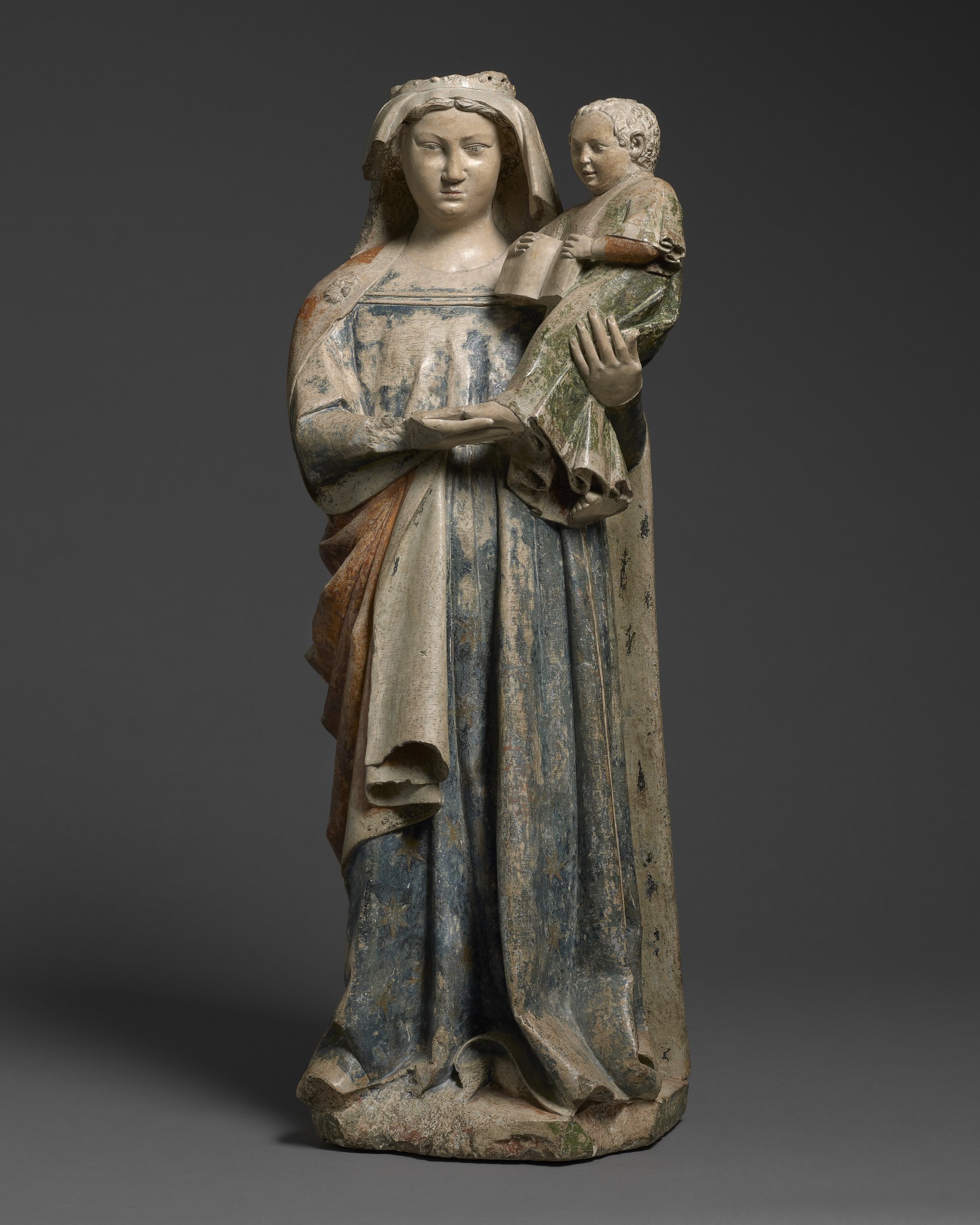


Private collection, France
W. H. Forsyth, 'Mediaeval Statues of the Virgin in Lorraine Related in Type to the Saint-Dié Virgin', Vol. V, Pt. 2 (Metropolitan Museum Studies, 1936), pp. 235-258
J. A. Schmoll, gene. Eisenwerth, Die Lothringische Skulptur des 14. Jahrhunderts (Michael Imhof Verlag, Petersberg, 2005), pp. 102-103
Carved in the round in fine grained limestone, richly polychromed and in an exceptional state of original preservation, this exquisite Virgin and child exhibits all of the hallmarks of the very highest quality French gothic representations of the subject.
Standing slightly contrapposto, the Virgin is draped in a large red cloak lined in ermine revealing a blue dress clinched at the waist with a buckle and decorated long vertical belt which follows the undulations of the fabric. The movement of the drapery which falls gracefully in straight soft folds to the feet enhances the majesty of the scene. Mary wears a crown with short veil exposing wavy hair. She bears the weight of her infant son on her left side, her right hand touching tenderly the sole and toes of his slightly outstretched left foot. Curly haired, he wears a long green tunic decorated with a light gold band and holds in both hands an open book on which painted Latin verses can still be seen. The toes of his right foot peep from beneath the hem of his garment. The ears of the infant Jesus are open slightly, a characteristic of their representation in early 14th century Lorraine sculpture. Smiling, he looks down at the viewer in contrast to his mother who gazes forward in quiet contemplation.
During the 14th century the production of stone sculpture flourished in the medieval duchy of Lorraine. In his seminal study of the subject, Schmoll, (op.cit.) documents the commencement around 1280 and development of the production in the region of representations of the Virgin and child, an especially popular subject of the time. Referencing our Virgin and child in detail, Schmoll dates this work to around 1310. Early effigies of the Lorraine Virgin and child portray the Madonna with a determined oval face, full wide neck, cleft chin, broad forehead and ear parts – all features seen in our example.
Exhibiting an architectural quality rare for 14th century French sculpture, this outstanding museum quality object may be compared to the Virgin and child formerly of the Georges Ryaux Collection now housed in the Musée du Louvre (Inv. R.F. 3451).
SOLD: Private collection, Belgium